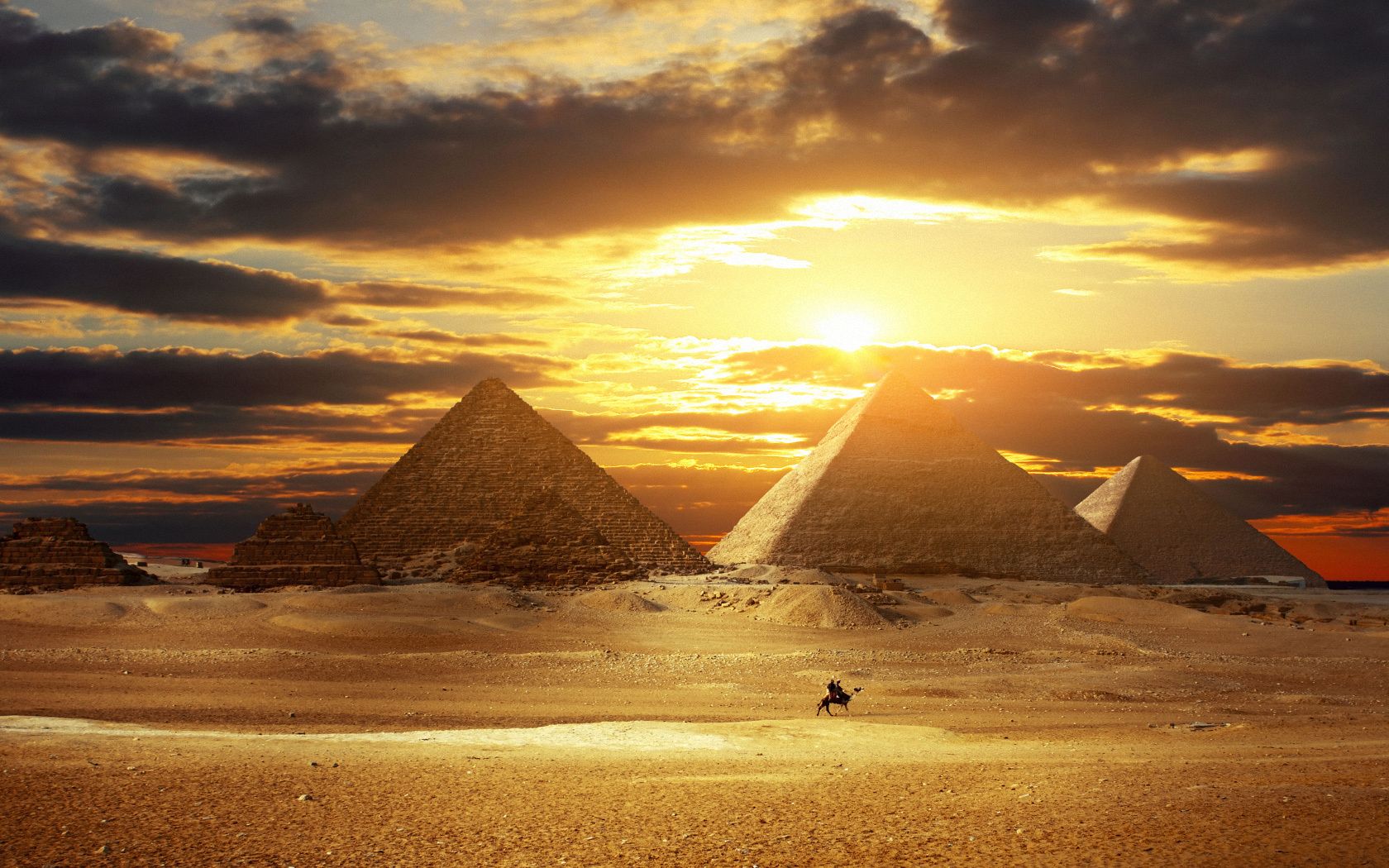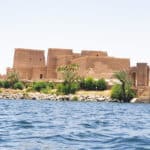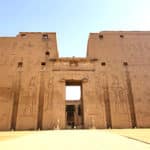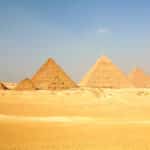The Pyramids of Egypt are built at a time when Egypt was part of one of the richest civilizations. Also the most powerful in the world. The great pyramids of Egypt are those of Giza in particular are among the most magnificent man-made structures in history. Their massive scale reflects the unique role that the pharaoh, or king, played in ancient Egyptian society. Although the pyramids have been built since the beginning of the Old Kingdom. Then until the end of the Ptolemaic period in the fourth century AD. However, the height of pyramid building began at the end of the Third Dynasty and continued until about the Sixth (around 2325 BC). More than 4,000 years later, the Egyptian pyramids still retain much of their majesty. This gives a glimpse of the rich and glorious past of the country.
The pharaoh in Egyptian society
During the Third and Fourth Dynasties of the Old Kingdom. Although Egypt has enjoyed considerable economic prosperity and stability. Kings held a unique position in Egyptian society. Somewhere between the human and the divine. It was believed that they are chosen by the gods themselves to serve as their mediators on earth. Because of this, it was in everyone's interest to keep the king's majesty intact even after his death. When he was supposed to become Osiris, the god of the dead. The new pharaoh, in turn, became Horus, the falcon god who served as protector of the sun god, Ra.
The smooth, angular sides of the pyramid symbolized the rays of the sun. Though designed to help the king's soul ascend to heaven and join the gods, especially the sun god Re.
The ancient Egyptians believed that when the king died. A part of his spirit (called "ka") stayed with his body. To take care of his mind. Although the corpse was mummified and everything the king would need in the afterlife was buried with it. Including golden vessels, food, furniture and other offerings. The pyramids of Egypt became the center of a cult of the dead king which was to continue long after his death. Their wealth was not only to provide him with food. But also to relatives, officials and priests who are buried near him.
She started out as a traditional mastaba. But developed into something much more ambitious. The story goes that the architect of the pyramid Imhotep a priest and healer. Who, some 1,400 years later, will be deified as the patron saint of scribes and physicians.
During Djoser's reign, which lasted almost 20 years. The builders of the pyramid assembled six layers of stone in steps (as opposed to mud brick. Like most previous tombs which eventually reached a height of 62 meters. It was the tallest building at the time. The step pyramid was surrounded by a set of courtyards, temples and shrines where Djoser could enjoy the afterlife.
After Djoser, the step pyramid became the standard for royal burials in the pyramids of EGYPT. The oldest tomb built as a "real" pyramid (with smooth walls and not with steps) is the red pyramid of Dahshur. One of three burial structures built for the first king of the Fourth Dynasty, Sneferu. It was named after the color of the limestone blocks used to build the core of the pyramid.
The symbolism of the pyramid
The shape of the pyramids of Egypt is believed to represent the primordial mound. From which the Egyptians believed the earth was created. As well as the shape of a pyramid is also considered representative of the descending rays of the sun. Although most of the pyramids were covered in polished, highly reflective white limestone. To make them look shiny when viewed from a distance. In addition the pyramids of Egypt were often named in a way that referred to solar luminescence. For example, the official name of Dahshur's pyramid was 'The Rays of Southern Lights'.
The Egyptians believed that the dark area of the night sky around which the stars seem to revolve was the physical doorway to the heavens. One of the narrow shafts that extend from the main burial chamber through the entire body of the Great Pyramid points directly towards the center of this part of the sky. This suggests that the pyramid may have been designed to serve as a means of magically launching the deceased pharaoh's soul directly into the abode of the gods.
All of Egypt's pyramids were built on the west bank of the Nile, which, as the site of the setting sun, was associated with the realm of the dead in Egyptian mythology.
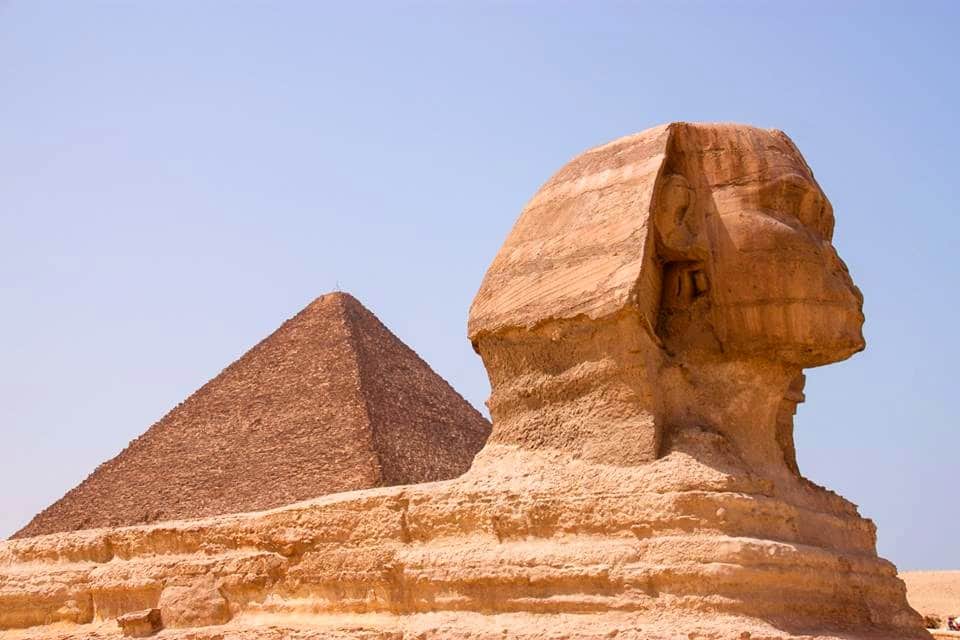
The most famous pyramids in Egypt are the Great Pyramids of Giza. Located on a plateau on the west bank of the Nile, on the outskirts of present-day Cairo. The oldest and largest of the three pyramids at Giza. Known as the Great Pyramid. It is the only surviving structure among the famous Seven Wonders of the Ancient World. Built for Pharaoh Khufu (Cheops, in Greek).
While he is the successor of Sneferu and second of the eight kings of the fourth dynasty. Although Khufu ruled for 23 years (2589-2566 BC). However, relatively little is known of his reign beyond the size of his pyramid.
The sides of the base of the pyramid measure on average 230 meters and its initial height was 147 meters. Making it the largest pyramid in the world and pyramids of Egypt. Three small pyramids built for the queens of Cheops are lined up next to the Great Pyramid. As well as a tomb found nearby containing the empty sarcophagus of his mother, Queen Hetepheres. Like the other pyramids, that of Cheops is surrounded by rows of mastabas. Where relatives or officials of the king were buried to accompany and support him in the afterlife.
The middle pyramid at Giza was built for the son of Cheops, the pharaoh Chephren (2558-2532 BC). In fact the pyramid of Chephren is the second tallest pyramid in Giza and pyramids in Egypt. While it contains the tomb of the pharaoh Khephren. Although a unique feature built inside the Chephren pyramid complex is the Great Sphinx.
In fact it is a statue of a guardian carved in limestone with the head of a man and the body of a lion. Moreover, it is the largest statue in the ancient world, measuring 240 meters long and 66 meters high. Also during the 18th Dynasty (c. 1500 BC), the Great Sphinx became the image of a local form of the god Horus. The southernmost pyramid at Giza built for Mykerinus the son of Chephren (2532-2503 BC). It is the shortest of the three pyramids. And is a precursor to the smaller Egyptian pyramids that would be built during the Fifth and Sixth Dynasties.
Each pharaoh who built at Giza did so according to simple rules that harmoniously ordered the three funerary complexes on the plateau. The facade of the upper temple of Chephren is aligned with the western face of the pyramid of Cheops And the facade of the upper temple of Mykerinos is aligned with the western face of the pyramid of Chephren. At the same time the imaginary line which roughly connects the southeast corners of the three pyramids points towards the temple of Ra at Heliopolis.
The construction of Giza pyramids
The feats of ancient engineering at Giza were so impressive that even today scientists cannot be sure how the pyramids were built. Yet they learned a great deal about the people who built them and the political power needed to make it happen.
The builders were skilled, well-fed Egyptian workers who lived in a nearby temporary town. Archaeological excavations at this fascinating site revealed a highly organized, resource-rich community that needed to be supported by a strong central authority.
It is likely that communities all over Egypt provided workers, as well as food and other essentials, for what became in some ways a national project aimed at showing off the wealth and control of the ancient pharaohs.
Such revelations led Zahi Hawass, secretary general of the Supreme Council of Antiquities of Egypt. Note that, in a sense, it was the pyramids that built Egypt – not the other way around.
Preserving the past
If the Pyramids contributed to the construction of ancient Egypt, they also preserved it. Giza allows us to explore a world long gone.
“A lot of people think the site is just a cemetery in the modern sense, but it's much more than that. In these decorated tombs you have marvelous scenes of all aspects of life in ancient Egypt. So it's not just about how the Egyptians died but also about how they lived."
Tomb art includes depictions of ancient farmers working in their fields and tending to livestock, fishing and birds, carpentry, costumes, religious rituals and burial practices.
The inscriptions and texts also allow research into Egyptian grammar and language. Almost any subject you want to study about the pharaonic civilization is available on the walls of the tombs of Giza”.
Who built the pyramids?
Although some popular versions of the story maintain that the pyramids of Egypt were built by slaves or foreigners forced to work. While skeletons found in the area show the workers were likely ethnic Egyptian farm laborers who worked on the pyramids at the time of year when the Nile flooded much of the surrounding land. About 2.3 million blocks of stone (about 2.5 tons each on average) had to be cut. Then transported and assembled to build the Great Pyramid of Cheops. Ancient Greek historian Herodotus wrote that it took 20 years to build and required the labor of 100,000 men. But later archaeological evidence suggests that the workforce could in fact have been around 20,000.
The end of the era of the pyramids of Egypt
Pyramids continued to be built throughout the Fifth and Sixth Dynasties. But the general quality and scale of their construction declined during this period. Just like the power and wealth of the kings themselves. Among the last pyramids of the Old Kingdom is that of King Unas (2375-2345 BC). Although the builders of pyramids began to inscribe on the walls of the burial chamber. Also on the rest of the interior of the pyramid are written accounts of events that occurred during the king's reign. Known as the Pyramid Texts. While they are the oldest significant religious compositions known from ancient Egypt.
The last of Egypt's great pyramid builders was Pepy II (2278-2184 BC). While he is the second king of the sixth dynasty. Although he came to power when he was still a young boy and ruled for 94 years. During his reign, the prosperity of the Old Kingdom was declining. And the pharaoh had lost some of his quasi-godlike status. As the power of non-royal administrative officials increased. The pyramid of Pepy II, built in Saqqara and completed 30 years after his reign. While it was much shorter (172 feet) than other Old Kingdom pyramids.
With Pepy's death, the kingdom and the powerful central government all but collapsed. And Egypt entered a turbulent phase known as the First Intermediate Period. Later kings, from the 12th Dynasty, would return to building pyramids during the so-called Middle Kingdom phase. But it will never be on the same scale as the Great Pyramids.
The pyramids today
Grave robbers and other vandals in ancient and modern times removed most of the bodies and grave goods from the pyramids of Egypt and also looted their exterior. Stripped of most of their coatings of smooth white limestone, the great pyramids no longer reach their original height; that of Cheops. Nevertheless, millions of people continue to visit the pyramids each year, drawn to their grandeur and the enduring appeal of Egypt's rich and glorious past.
Admire the beauty of Egyptian pyramids during your trip to Egypt.

